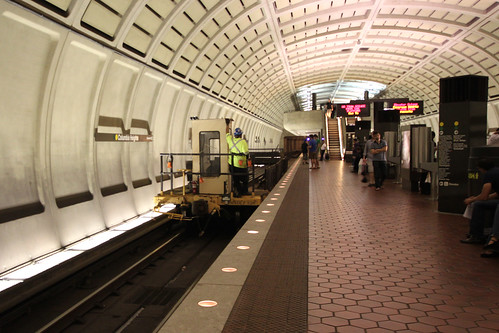Lost and Found! Runaway school boy rides NYC subways for 11 days fearing scolding at home
(Source: New York Times)
Day after day, night after night, Francisco Hernandez Jr. rode the subway. He had a MetroCard, $10 in his pocket and a book bag on his lap. As the human tide flowed and ebbed around him, he sat impassively, a gangly 13-year-old boy in glasses and a redAfter getting in trouble in class in Bensonhurst, Brooklyn, and fearing another scolding at home, he had sought refuge in the subway system. He removed the battery from his cellphone. “I didn’t want anyone to scream at me,” he said.
All told, Francisco disappeared for 11 days last month — a stretch he spent entirely in subway stations and on trains, he says, hurtling through four boroughs. And somehow he went undetected, despite a round-the-clock search by his panicked parents, relatives and family friends, the police and the Mexican Consulate.
Since Oct. 26, when a transit police officer found him in a Coney Island subway station, no one has been able to fully explain how a boy could vanish for so long in a busy train system dotted with surveillance cameras and fliers bearing his photograph. hoodie, speaking to no one.
Francisco told the paper that he spent his time on three subway lines, the D, F and 1, and would ride the trains until the last stop then hop on the next one going back the other way. He ate whatever he could afford from subway newsstands, like potato chips and jellyrolls, then neatly folded the wrappers and saved them in his backpack, while drinking bottled water. He drank bottled water. He used the bathroom in the Stillwell Avenue station in Coney Island.
Otherwise, he says, he slipped into a kind of stupor, sleeping much of the time, his head on his book bag. “At some point I just stopped feeling anything,” he recalled.
Six days after Francisco’s disappearance, on Oct. 21, the case shifted from the police precinct to the Missing Persons Squad, and the search intensified. A police spokeswoman explained that a precinct must complete its preliminary investigation before the squad takes over. The squad’s focus then turned to the subway. Officers blanketed the system with their own signs, rode trains and briefed station attendants.
About 6 a.m. on Oct. 26, the police said, a transit officer stood on the D train platform at the Stillwell Avenue station studying a sign with Francisco’s photo. He turned and spotted a dirty, emaciated boy sitting in a stopped train. “He asked me if I was Francisco,” the boy recalled. “I said yes.”
Asked later how it felt to hear about the work that had gone into finding him, Francisco said he was not sure. “Sometimes I don’t know how I feel,” he said. “I don’t know how I express myself sometimes.”
Apart from leg cramps, he was all right physically, and returned to school a week later. But Ms. García said she was still trying to learn how to manage her son’s condition.
Click here to read the entire story.









